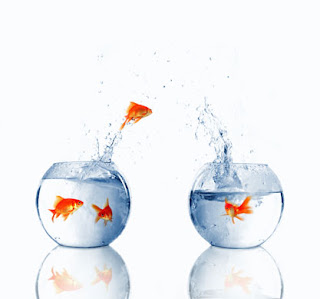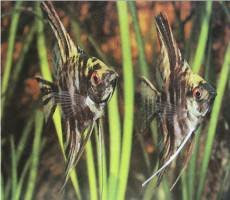Media is the plural of medium in terms aquatic relates to the flow of water through a suitable material to affect or modify the water. In other words, filtration, and without waste matter and quickly establish lack of water, turning it into a deadly cocktail of chemicals.
The media are classified into three categories, mechanical - biological - chemical, each with its own work to do. Mechanical filter materials such as wire filter (woolen synthetic) of foam or sponge, are very good at removing debris floating on water, a term called polishing.
And the clear water, its primary function, when used in multi-room filters, is to prevent biological environments of obstruction. Organics will to some extent on the mechanics of media as water passes through it. Because of the nature of their work mechanical media require regular cleaning.
Biological or bacterial media should be very good surface. This is where the microscopic bacteria live, and they take up residence in the millions of tiny holes available to them in the media.
Moss (especially for aquarium use, non-toxic) can be used in this application because of its large size, and water easily passes through the supply of the bacterial colony with fresh oxygen and nutrients, Indeed, many filters rely on foam as the main medium.
There are many products available claiming very high surface areas, such as biotic rock, ceramics and media fritted glass for example. These products are extremely porous, hence the large area. If they were to be stabilized, they would not work very well, but the surface would be enormous.
Some claim to have the surface the size of a tennis double, from a pack-liter. Bacteria are very small and colonize all they can cling to, so tired of everything that will act as a medium, even the gravel in your tank.
Chemical media is the last stage of filtration, chemicals that the media will change the quality of water by reaction and adsorption. Carbon is the most popular medium chemical filter, and is very good to remove pollutants of freshwater and marine aquariums, or rainwater before it is used in your aquarium.
Unlike mechanical media, which can be washed and reused, or biological media that will last as long as it is colonized by bacteria, carbon becomes saturated and must be renewed. Failure to renew carbon can lead to the pollutants it is collected fall and be released into the water.
Phosphates and nitrates can be removed with various resin-based media, while the zeolite, another popular chemical filtration media, removing ammonia from fresh water, and the release of sodium less harmful.
Unlike carbon, which must be discarded when used up, washing zeolite in salt water, it can recharge, which hunt ammonia and replaced by more sodium. To keep the nitrification process work effectively, aquarium good hygiene must be respected, which means regular maintenance, keeping gravel clean, remove debris and uneaten food.
Do not overeat or surplus, it is inviting problems. The aquarium is a closed environment, using artificial means to survive, and if the media becomes clogged it will dramatically reduce the area available for colonization, and significantly slow down ammonia and nitrite consumption, which in turn lead to stress in your fish and outbreaks of the disease.
The media are classified into three categories, mechanical - biological - chemical, each with its own work to do. Mechanical filter materials such as wire filter (woolen synthetic) of foam or sponge, are very good at removing debris floating on water, a term called polishing.
And the clear water, its primary function, when used in multi-room filters, is to prevent biological environments of obstruction. Organics will to some extent on the mechanics of media as water passes through it. Because of the nature of their work mechanical media require regular cleaning.
Biological or bacterial media should be very good surface. This is where the microscopic bacteria live, and they take up residence in the millions of tiny holes available to them in the media.
Moss (especially for aquarium use, non-toxic) can be used in this application because of its large size, and water easily passes through the supply of the bacterial colony with fresh oxygen and nutrients, Indeed, many filters rely on foam as the main medium.
There are many products available claiming very high surface areas, such as biotic rock, ceramics and media fritted glass for example. These products are extremely porous, hence the large area. If they were to be stabilized, they would not work very well, but the surface would be enormous.
Some claim to have the surface the size of a tennis double, from a pack-liter. Bacteria are very small and colonize all they can cling to, so tired of everything that will act as a medium, even the gravel in your tank.
Chemical media is the last stage of filtration, chemicals that the media will change the quality of water by reaction and adsorption. Carbon is the most popular medium chemical filter, and is very good to remove pollutants of freshwater and marine aquariums, or rainwater before it is used in your aquarium.
Unlike mechanical media, which can be washed and reused, or biological media that will last as long as it is colonized by bacteria, carbon becomes saturated and must be renewed. Failure to renew carbon can lead to the pollutants it is collected fall and be released into the water.
Phosphates and nitrates can be removed with various resin-based media, while the zeolite, another popular chemical filtration media, removing ammonia from fresh water, and the release of sodium less harmful.
Unlike carbon, which must be discarded when used up, washing zeolite in salt water, it can recharge, which hunt ammonia and replaced by more sodium. To keep the nitrification process work effectively, aquarium good hygiene must be respected, which means regular maintenance, keeping gravel clean, remove debris and uneaten food.
Do not overeat or surplus, it is inviting problems. The aquarium is a closed environment, using artificial means to survive, and if the media becomes clogged it will dramatically reduce the area available for colonization, and significantly slow down ammonia and nitrite consumption, which in turn lead to stress in your fish and outbreaks of the disease.














